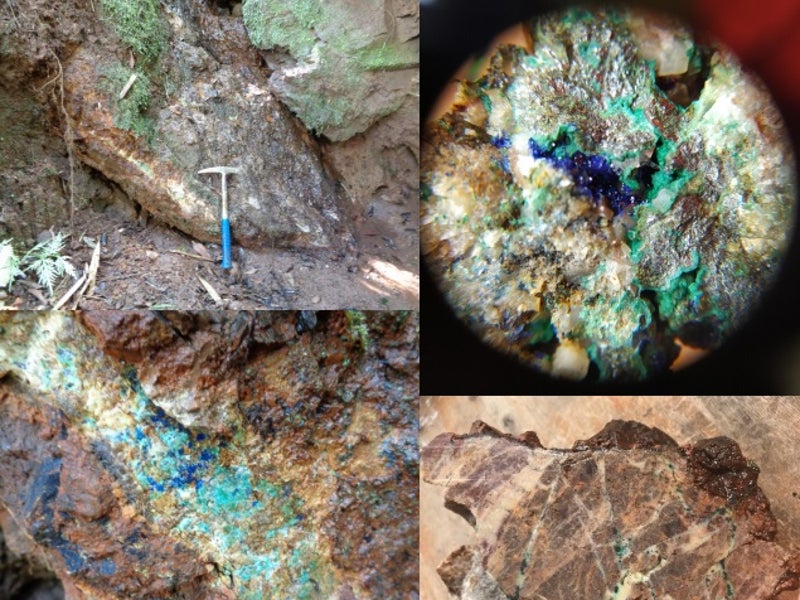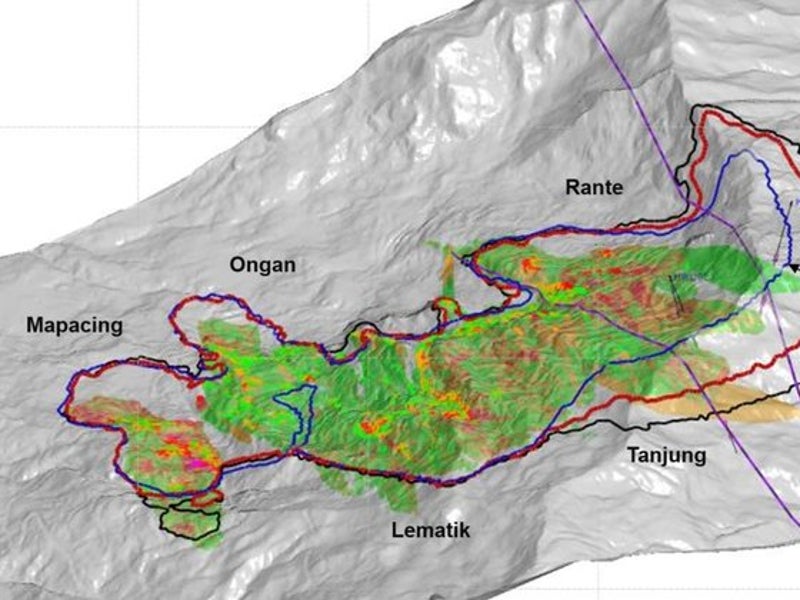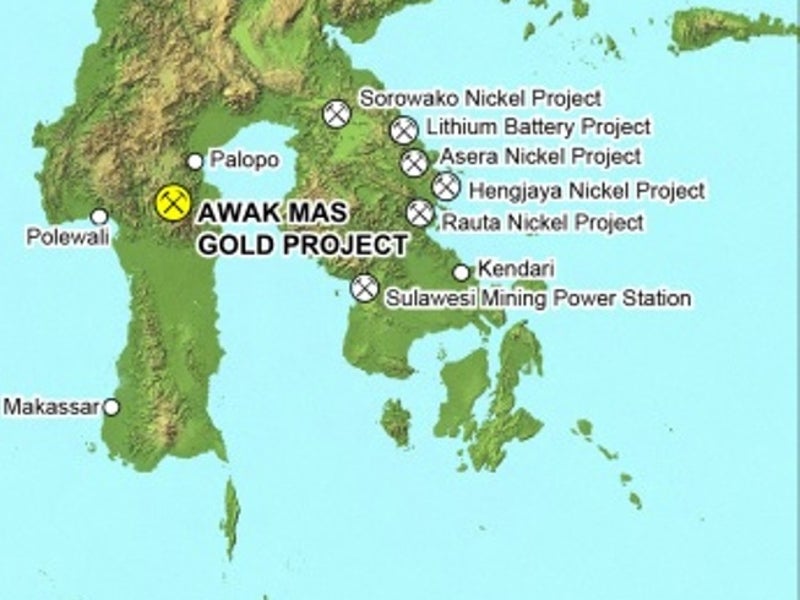The Awak Mas gold project is a high-grade gold project located in South Sulawesi Province, Indonesia. Masmindo Dwi Area (Masmindo), a wholly owned subsidiary of Nusantara, owns the mining rights of the project until 2050.
The project’s definitive feasibility study (DFS), completed in October 2018, envisages a production target of 100,000oz of gold a year through an initial 11-year mine life.
The Indonesian project is anticipated to be developed with an initial capital cost of $146m. First gold is anticipated to be produced in 2020.
Nusantara executed a relationship deed with Indika Energy to work together and explore avenues for the financing and development of the Awak Mas gold project in December 2018.
The agreement also creates a provision for Indika Energy to further acquire at least 25% of the Awak Mas gold project.
Awak Mas gold project location, geology, and mineralisation
Discovered in 1988, The Awak Mas gold project is located 45km from Belopa on the east coast of South Sulawesi Province, Indonesia.
The project was explored by many owners and underwent multiple drilling and technical studies within the 14,390ha contract of work (CoW). Nusantara acquired the project from One Asia Resources in 2017.
The project is made up of three deposits namely Awak Mas, Salu Bulo, and Tarra. It hosts a high level, low sulphidation hydrothermal system that features a strong sub-vertical fracture control.
Mineralisation at the project occurs in a cover sequence of meta-sedimentary rocks, and a basement sequence of diorites and biotite dominant schists.
The Salu Bulo and Tarra gold deposits are respectively located 2.5km and 4.5km from the main Awak Mas deposit. The Salu Bulo deposit is made up of multiple mineralised quartz vein breccia structures while the Tarra deposit hosts mineralisation similar to that of Awak Mas, but with a dominant sub-vertical structural control.
Reserves
The probable ore reserves at Awak Mas gold project are estimated to be 26.9 million tonnes (Mt), grading 1.32g/t Au. The contained metal is estimated to be 1.14 million ounces (Moz).
Mining and ore processing
Conventional open-pit mining methods, involving drilling and blasting, will be applied at the Indonesian project to extract 28Mt of ore. It will use 90t excavators and 60t articulated dump trucks.
The mined ore will be processed at the 2.5 million tonnes per annum (Mtpa) processing plant, using a whole of ore leach (WOL) cyanide leaching process, to produce approximately 100,000oz of gold a year.
The ore will undergo primary crushing followed by wet grinding in a semi-autogenous (SAG) and ball milling circuit (SAB circuit). The resultant product will pass through gravity gold recovery, cyanide carbon-in-leach (CIL) circuit, and gold recovery and elution circuits.
The CIL tailings will be thickened and subject to cyanide destruction, before being conveyed to the tailings storage facility, to produce gold doré.
Contractors involved
Nusantara prepared the project DFS with support from independent consultants such as Cube Consulting, AMC Consultants, Minnovo, Golder Associates (PT Geotechnical & Environmental Services Indonesia), Resindo, and Lorax Indonesia.
Infrastructure at Awak Mas gold mine
The project can be reached through Belopa, the capital of the Luwu Regency, which is located approximately 45km by road from the project.
Power supply for the site is currently sourced from the Sulawesi power grid by PLN through a 20kV distribution line. Nusantara signed a memorandum of understanding (MOU) with Indonesian state-owned power distributor Perusahaan Listrik Negara (PLN) for the construction of a power line from Belopa to the project site.
Fuel will be sourced from the regional fuel distribution depot located within the Belopa to Palopo infrastructure corridor. State-owned oil and natural gas corporation Pertamina owns the corridor.
Water will be sourced from the Songgang River and pumped to the processing plant via a pipeline.
The proposed offsite support facilities complex in Belopa comprises a main administration office, warehouse, and core yard, which includes core process and storage buildings.






